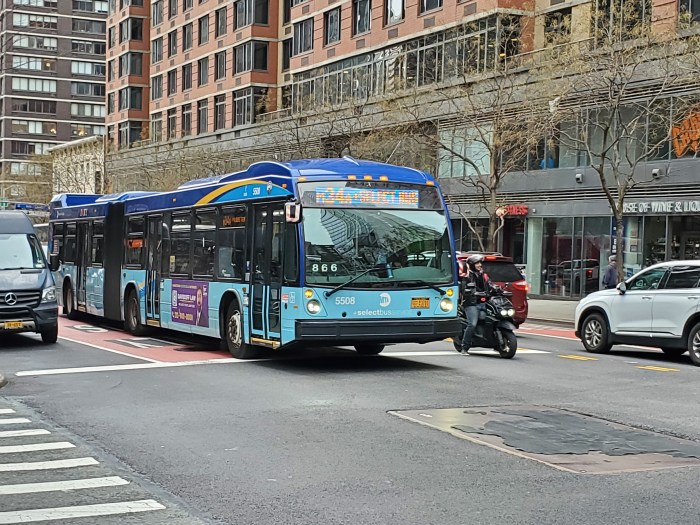The MTA’s transit president Andy Byford went on a ride-along with advocates Friday, as the authority faces pressure to make more subway stations wheelchair-accessible.
Byford grabbed coffee and took the Lexington Avenue line with advocates from the political action group Rise and Resist. They discussed issues that make the subways notoriously inaccessible, including a lack of working elevators, the gaps between platforms and trains and poor signage and communication, members of Rise and Resist told amNewYork.
Byford displayed knowledge of the issues and seemed to be earnestly interested in addressing them, according to Rise and Resist. But the group said it was unsure whether Byford will be able to break through the MTA bureaucracy and governance, which has largely neglected wheelchair users for the past 30 years.
“All of us were a little skeptical at first, but he seemed to really generally care about the issue and what we had to say,” said Jessica Murray, of Rise and Resist, who noted the route for the trip was unplanned. “There are so many little problems along the way that elevators are really just the tip of the iceberg . . . [Byford’s] got an uphill battle to face because it ultimately comes down to funding, and no matter how supportive he is, the governor and the state and the board has to provide the money to make it happen.”
Currently about 118 — or a quarter — of the subway system’s 472 stations are accessible. And the authority is facing at least three lawsuits that argue it is not doing enough to maintain elevator service or make more stations accessible, as required under the Americans with Disabilities Act.
“We met to educate him on disability issues — but I still feel very strongly on the importance of the lawsuits,” said April Coughlin, a Rise and Resist member and wheelchair user who has had to wheel through feces-smeared elevator floors and be carried out of stations when elevators have been taken out of service.
Since joining the MTA in January, Byford has said that accessibility is one of his top priorities at the authority. He is in the process of studying the costs and feasibility of making all stations wheelchair accessible and crafting a strategy to address an increase in the number of out-of-service elevators.
“I met with [Rise and Resist] because I am serious about accelerating the push for full accessibility and to do that, I need to spend time with advocates and people with mobility impairment to ensure we apply the right fixes,” Byford said in an email. “The tour gave me a much better insight into what remains to be done. Accessibility is way more than just the installation of elevators, important though that is; it is thinking through the entire journey, end-to-end, and then applying the right solutions.”
Still, some are still waiting for the MTA to make a formal commitment to 100 percent accessible stations, including Michelle Caiola, the managing director of litigation at the Disability Rights Advocates, the attorneys in the three lawsuits. Caiola said it is time for the authority to take a more aggressive approach than making 100 “key” stations accessible, as the MTA pledged to do after the passage of the Americans with Disabilities Act.
“Other places like Chicago had key stations targets as well, but they have moved beyond that to do more stations — something the MTA is just now starting to give lip service to,” Caiola said. “This is about long-standing discrimination by the MTA and it’s going to take a commitment from the highest levels at the MTA, in the form of a court-enforceable agreement, before we can truly count on it … otherwise the meeting looks like a press strategy.”
An MTA spokesman said the authority does not comment on pending litigation.
Correction: An earlier version of this story incorrectly identified the Disability Rights Advocates, who are attorneys in three lawsuits.

















